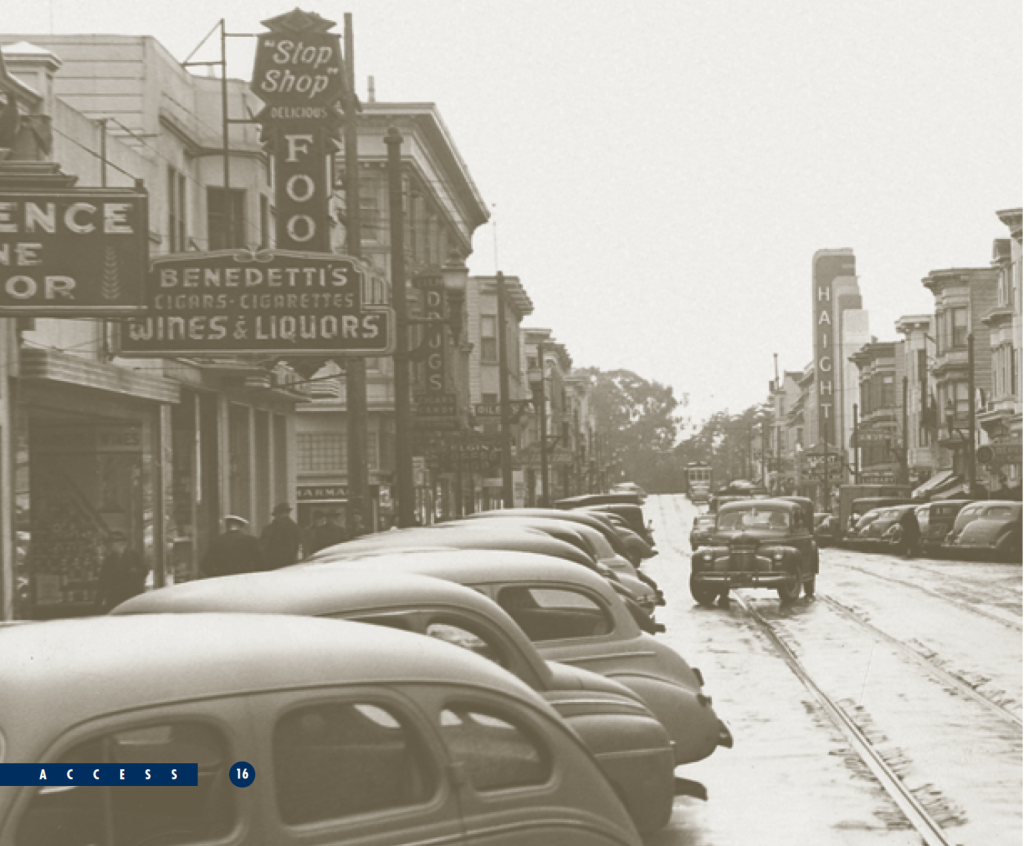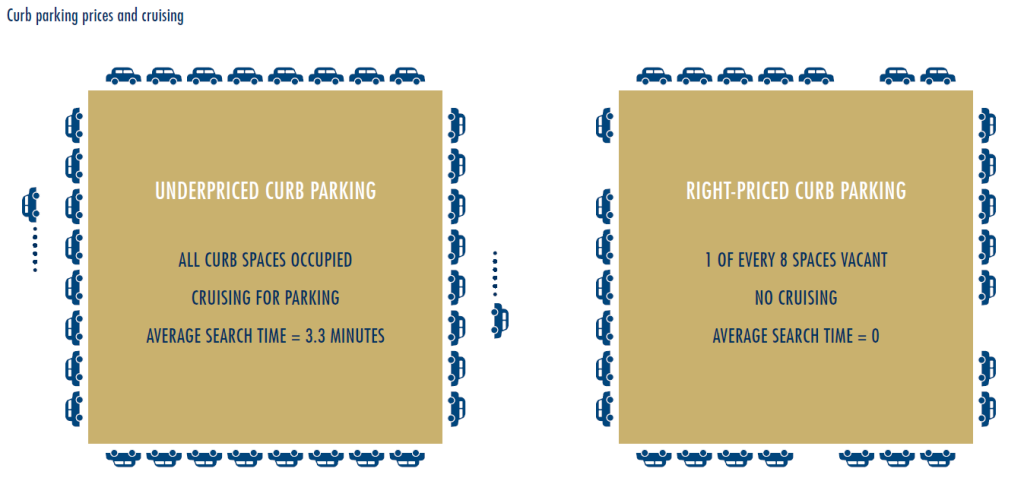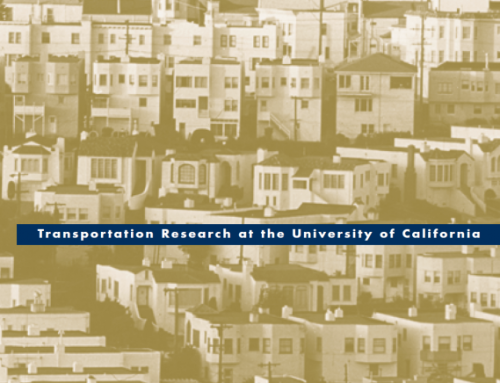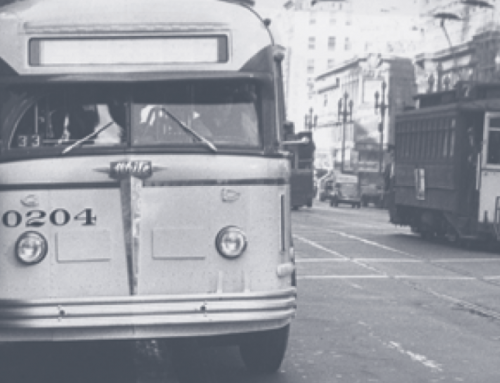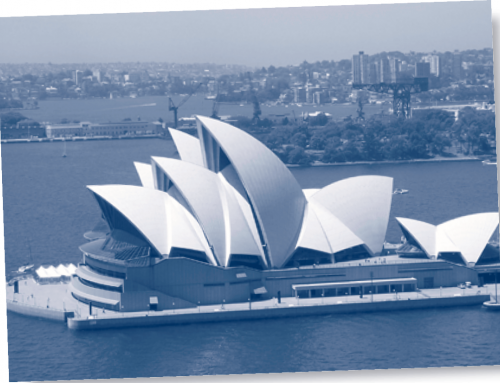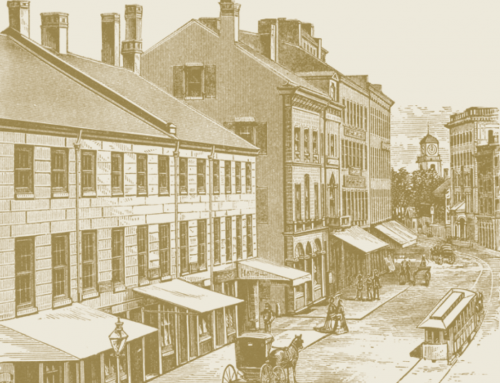A surprising amount of traffic isn’t caused by people who are on their way somewhere. Rather it is caused by people who have already arrived. Our streets are congested, in part, by people who have gotten where they want to be but are cruising around looking for a place to park.
Driving in Circles
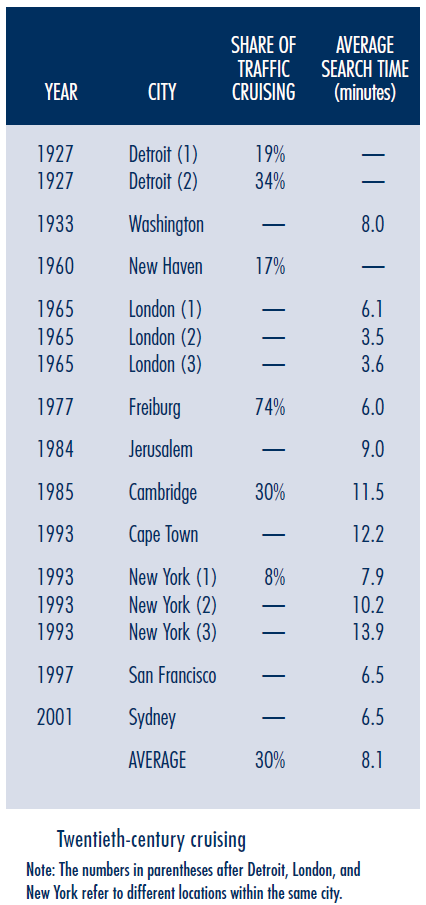 Perhaps because cruising is a disguised source of congestion, most transportation planners and engineers have ignored it. Cruising creates a mobile queue of cars waiting for curb vacancies, but cruisers are mixed with traffic that is going somewhere, so no one can see how many cars are in the cruising queue. Nevertheless, a few researchers have analyzed cruising by videotaping traffic flows, interviewing drivers who park at the curb, or driving test cars to search for a curb space. Sixteen studies of cruising behavior were conducted between 1927 and 2001 in the central business districts of eleven cities on four continents (see Figure 1). The average time it took to find a curb space was eight minutes, and about thirty percent of the cars in the traffic flow were cruising for parking. The data varied widely around these averages, however; on some uncrowded streets no cars were cruising, while on some congested streets most of the cars were cruising.
Perhaps because cruising is a disguised source of congestion, most transportation planners and engineers have ignored it. Cruising creates a mobile queue of cars waiting for curb vacancies, but cruisers are mixed with traffic that is going somewhere, so no one can see how many cars are in the cruising queue. Nevertheless, a few researchers have analyzed cruising by videotaping traffic flows, interviewing drivers who park at the curb, or driving test cars to search for a curb space. Sixteen studies of cruising behavior were conducted between 1927 and 2001 in the central business districts of eleven cities on four continents (see Figure 1). The average time it took to find a curb space was eight minutes, and about thirty percent of the cars in the traffic flow were cruising for parking. The data varied widely around these averages, however; on some uncrowded streets no cars were cruising, while on some congested streets most of the cars were cruising.
Cities have changed since these observations were made, and the data are selective because researchers study cruising only where they expect to find it. Nevertheless, cruising itself has not changed, and the studies show that cruising for parking has wasted time and fuel for many decades.
Even a small search time per car can create a surprising amount of traffic. Consider a congested downtown where it takes three minutes to find a curb space and the parking turnover is ten cars per space per day. For each curb space, cruising thus results in thirty extra minutes of vehicle travel per day (3 minutes x 10 cars). If the average cruising speed is ten miles an hour, cruising creates five vehicle miles traveled per space per day (10 mph x 0.5 hour). Over a year, this driving in circles amounts to 1,825 VMT for each curb space (5 miles x 365 days), greater than half the distance across the United States.
Choosing to Cruise
Suppose curb parking is free but all the spaces are occupied, so you have to cruise until you find a space being vacated by a departing car. Off-street parking is available but you have to pay the market price for it. How do you decide whether to cruise or to pay? If off-street parking is expensive, many drivers will hunt for curb parking, an entirely rational response to prices. Thus, by underpricing their curb parking, cities create an economic incentive to cruise. To study this incentive, I collected data on the price of curb and off-street parking for an hour at noon at the same location—City Hall—in twenty cities throughout the United States. The average price of curb parking was only twenty percent of the price of parking in a garage. Cruising saved drivers the most money in New York, where the price of off-street parking was $14.38 for the first hour, but curb parking was only $1.50.
Consider the high price of off-street parking in downtown Boston ($11 for the first hour), which stems in part from the city’s cap on the number of off-street parking spaces. This supply cap drives up the market price of off-street parking and produces an unintended outcome: the combination of low prices for curb parking and high prices for off-street parking increases the incentive to cruise. Boston limits the private off-street parking supply, but fails to charge the market price for its own public curb parking. A survey in 2006 found the average price for off-street 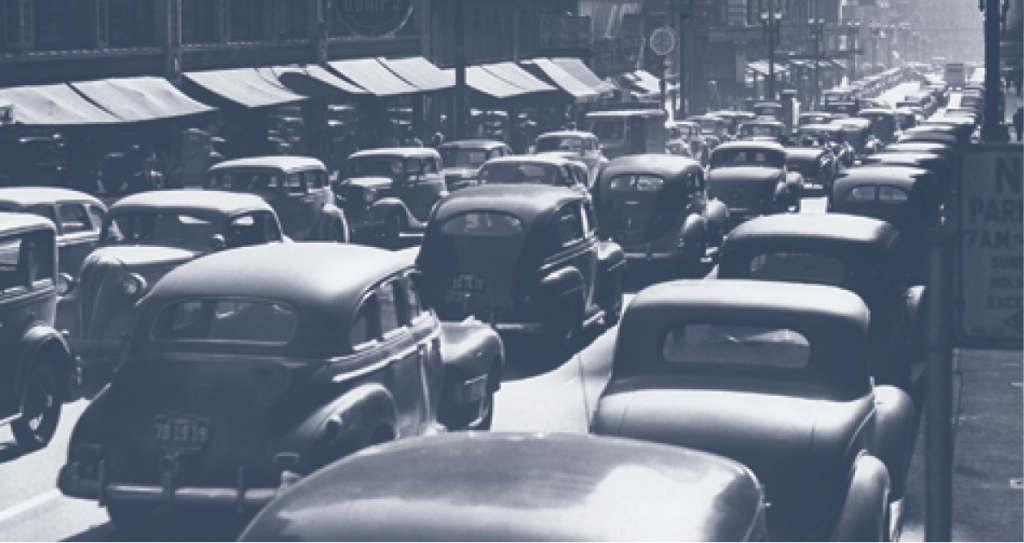 parking in the Boston central business district was $31 a day. In contrast, Boston charges a flat rate ($1 an hour) for all metered parking spaces in the city.
parking in the Boston central business district was $31 a day. In contrast, Boston charges a flat rate ($1 an hour) for all metered parking spaces in the city.
Boston’s off-street parking cap makes sense as a way to reduce congestion on routes to the city, but the failure to follow through with market prices for curb parking increases congestion in the city. Everyone would criticize off-street parking operators if long lines of cars regularly spilled into the streets and snarled traffic because the lots and garages were always full. Cities create the same result with underpriced curb parking, but the cruising cars are hidden in the general traffic flow.
Cruising in Los Angeles
To learn more about cruising, my students and I made 240 observations of how long it takes to find a curb parking space at four sites in Westwood Village, a commercial district next to the UCLA campus. Curb parking in metered spaces was only fifty cents an hour during the day and free in the evening, while the cheapest off-street parking was $1 an hour. For each observation we drove to the site and then circled the block until we found a curb space. Because the curb spaces were occupied almost all the time, we rarely found a vacant space when we arrived. Instead, we usually searched until we found a parked car about to vacate a space, and then waited for it to leave.
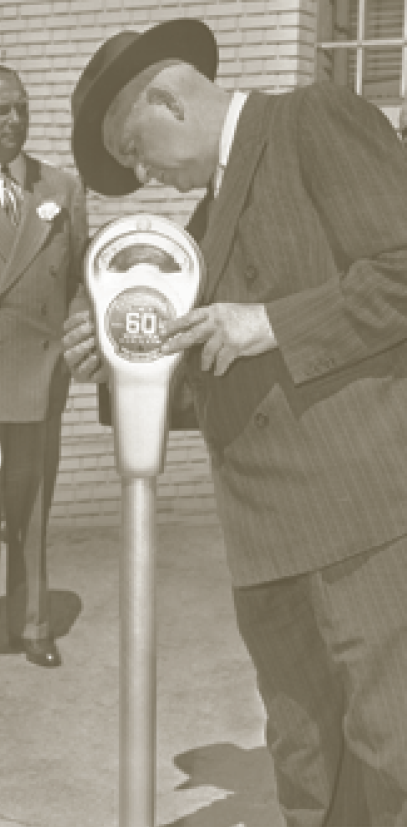 Most drivers who are cruising for parking try to avoid following directly behind another car that appears to be cruising, so as to maximize the chance of being the first to see a vacant spot. Driving a car to measure cruising times may therefore influence the behavior being studied. To avoid this potential pitfall and to get some exercise, we decided to make most of the observations by bicycle. The average cruising speed by car in Westwood is only eight to ten miles an hour because every intersection has a stop sign or traffic light, so a cyclist can easily keep up with vehicle traffic. For the tests, we equipped each bicycle with a cyclometer to measure elapsed travel time, distance traveled, and average speed.
Most drivers who are cruising for parking try to avoid following directly behind another car that appears to be cruising, so as to maximize the chance of being the first to see a vacant spot. Driving a car to measure cruising times may therefore influence the behavior being studied. To avoid this potential pitfall and to get some exercise, we decided to make most of the observations by bicycle. The average cruising speed by car in Westwood is only eight to ten miles an hour because every intersection has a stop sign or traffic light, so a cyclist can easily keep up with vehicle traffic. For the tests, we equipped each bicycle with a cyclometer to measure elapsed travel time, distance traveled, and average speed.
The average cruising time to find a curb space was 3.3 minutes, and the average cruising distance was half a mile (about 2.5 times around the block). The small distances cruised by individual drivers add up quickly, because the turnover rate for curb parking was seventeen cars per space per day. With 470 metered parking spaces in the Village, almost 8,000 cars park at the curb each day (17 x 470). Because so many cars park at the curb, a short cruising time for each driver creates an astonishing amount of traffic. Although the average driver cruises only half a mile before parking, cruising around the fifteen blocks in the Village creates almost 4,000 VMT every weekday (8,000 x 0.5).
Over a year, cruising in Westwood Village creates 950,000 excess VMT—equivalent to 38 trips around the earth, or four trips to the moon. The obvious waste of time and fuel is even more appalling when we consider the low speed and fuel efficiency of cruising cars. Because drivers average about ten miles an hour in the Village, cruising 950,000 miles a year wastes about 95,000 hours (eleven years) of drivers’ time every year. And here’s another inconvenient truth about underpriced curb parking: cruising 950,000 miles wastes 47,000 gallons of gasoline and produces 730 tons of CO2 emissions in a small business district.
The Right Pricing for Curb Parking
When drivers compare the prices of parking at the curb or in a garage, they usually decide the price of garage parking is too high, but instead the reverse is true. The price of curb parking is too low. Underpriced curb spaces are like rent-controlled apartments: they are hard to find, and once you find a space you’d be crazy to give it up. This makes curb spaces even harder to find, and increases the time cost (and therefore the congestion and pollution costs) of searching for them. Like rent-controlled apartments, curb spaces go to the lucky more than to the deserving. One person might find a curb space and park there for days, while others are left to circle the block.
The left panel of Figure 2 shows a typical commercial block in Westwood where curb parking is underpriced and all the curb spaces are occupied. The block has eight curb spaces on each side, the average cruising time to find a curb space is 3.3 minutes, and two cruisers are circling the block. In contrast, the right panel shows what happens if a city charges the lowest price that will produce a few vacant spaces. Drivers have no reason to cruise because they can always find a vacant curb space near their destination, search time is zero, and cruising cars do not add to traffic congestion.
Only trial and error will reveal the right price for curb parking. Initially, if all the curb spaces are always occupied, a city might periodically raise the meter rate by 25-cent increments until occupancy at some hours is about 85 percent. If spaces are still full during other hours, the city could continue to nudge meter rates upward during those times until the occupancy is about 85 percent all day. We can call this balance between the varying demand for parking and the fixed supply of curb spaces the Goldilocks Principle of parking prices: the price is too high if too many spaces are vacant, and too low if no spaces are vacant. When only a few spaces are vacant, the price is just right, and everyone will see that curb parking is both well used and readily available.
Pricing curb parking to ensure a few vacancies does not mean that travel will become unaffordable. Drivers can use several strategies to economize on curb parking without reducing their travel. They can (1) drive at off-peak hours when curb parking is cheaper, (2) park where prices are lower and walk farther to their destinations, (3) park for a shorter time, (4) park off-street, (5) carpool and split the cost of parking, or (6) take public transit, ride a bike, or walk all the way to their destinations. Diverting some trips to carpools, public transit, cycling, and walking will reduce vehicle travel without reducing human travel, and all real travel is by people, not cars.
Cruising in New York
In 2006, surveyors interviewed drivers stopped at a traffic signal in the SoHo district of Manhattan, and 28 percent reported they were cruising for curb parking. A similar study in Brooklyn found that 45 percent of drivers were cruising. The same results might be found on many other streets in New York because off-street parking is generally far more expensive than on-street parking. In midtown Manhattan, for example, the price for the first hour of off-street parking is often about $20, while curb parking is only $1. Parking for an hour at the curb saves $19, but drivers first have to cruise to find a space on the street.
The high price of off-street parking in midtown Manhattan doesn’t mean the right price for curb parking is also $20 an hour. Private operators can charge a disproportionately high price for short-term parking only because the curb spaces are always full. If the city charges the lowest price for curb parking that will yield a few vacant spaces everywhere, the price of short-term parking off-street will fall to compete with the curb rate.
Local Revenue Return
In addition to its transportation and environmental benefits, right-priced curb parking can yield ample revenue. If a city returns some of this revenue to pay for added public services on the metered streets, residents and local merchants will be more likely to support charging the right price for curb parking. The added funds can pay to clean and maintain the sidewalks, plant trees, improve lighting, remove graffiti, bury overhead utility wires, and provide other public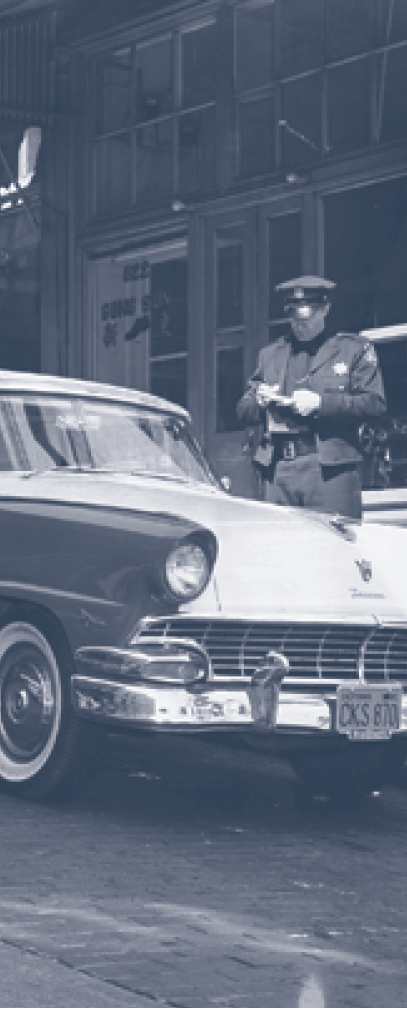 improvements.
improvements.
Consider the case of a Business Improvement District (BID) in an older area where curb parking is free and customers complain about a parking shortage. Suppose the city installs meters and charges the lowest prices that will produce a few vacancies. Everyone who wants to shop in the district can park quickly, and the meter money pays to clean the sidewalks and provide security. These added public services make the business district a place where people want to be, rather than merely a place where anyone can park free after they cruise long enough to find a space. No one can say this policy will drive customers away if almost all the curb spaces are always occupied.
When meter revenue goes into a city’s general fund rather than going back to the BID or neighborhood that generated it, the city can be careless about collecting it. In downtown San Francisco where the curb spaces always seem full, an audit in 2006 found that drivers paid for less than an hour a day per meter. A similar audit in Los Angeles in 2002 found that 96 percent of the vehicles parked at expired meters did not receive citations. If every BID received a share of the meter revenue it generated, business leaders would pay closer attention to enforcement. Consistent parking enforcement will create a culture of compliance with parking regulations.
Some cities have begun to charge performance-based prices for curb parking and return the meter revenue to its source. In Redwood City, California, for example, the city sets meter rates to achieve an 85 percent occupancy rate for curb parking downtown; the rates differ by location and time of day, depending on demand. The city returns the revenue for added public services in the metered district, and downtown Redwood City will receive an extra $1 million a year to pay for increased police protection and clean sidewalks. The merchants and property owners all supported the new policy when they learned the meter revenue would pay for added public services in the downtown business district, and the city council adopted it unanimously. Performance-based prices create a few curb vacancies so visitors can easily find a space, the added meter revenue pays to improve public services, and these public services create political support for the performance-based prices.
Most cities keep their meter rates constant throughout the day and let occupancy rates vary in response to demand. Instead, cities can charge different prices at different times of day to keep occupancy at about 85 percent. In Redwood City, the meter rates are higher in the central spaces because demand is higher there. The goal is to balance supply and demand everywhere, all the time.
Most cities also limit the length of stay at meters so long-term parkers won’t monopolize the underpriced curb spaces. But after Redwood City adjusted meter rates to guarantee the availability of curb spaces, it removed the time limits at meters. This unlimited-time policy has turned out to be popular with some drivers, who can now park for as long as they are willing to pay. The demand-determined meter rates create turnover at convenient curb spaces, and most long-term parkers tend to choose cheaper spaces in off-street lots.
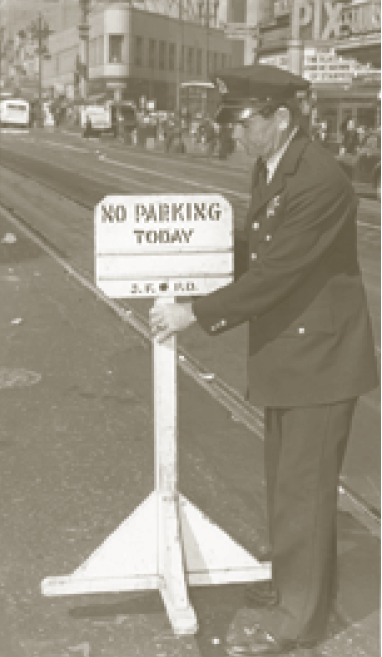 Parking Increment Finance
Parking Increment Finance
Most cities now put parking meter revenue into the city’s general fund. How can a city return meter revenue to business districts without shortchanging the general fund? The city can keep all the existing meter revenue and return a share of the subsequent increment in meter revenue—above and beyond the current meter revenue—that arises from right-priced curb parking. We can call this arrangement parking increment finance. More meters, higher rates, longer hours of operation, and better enforcement will increase the parking revenue in business districts. The added public services paid for by increased parking revenue will promote business activity, and the increased demand for parking will further increase meter revenue.
Get the Prices Right
Where curb parking is underpriced, drivers cruise for a curb space rather than pay to park off-street. Charging the right price for curb parking can eliminate this cruising and all its harmful side effects. Because city governments set the prices for curb parking, they choose whether drivers will cruise.
Because its curb parking is underpriced, Westwood Village generates almost a million miles of cruising every year. And because its curb parking is value-priced, Redwood City will generate $1 million a year for added public services. Which is the better policy? If cities want to reduce congestion, clean the air, save energy, reduce greenhouse gas emissions, improve neighborhoods, and do all this quickly, they should charge the right price for curb parking and spend the resulting revenue to improve local public services. Getting the price of curb parking right will do a world of good.
Further Readings
Richard Arnott and Eren Inci, “An Integrated Model of Downtown Parking and Traffic Congestion,” Journal of Urban Economics, vol. 60, no. 3, 2006.
Donald Shoup. The High Cost of Free Parking (Chicago: Planners Press, 2005).
Donald Shoup, “Cruising for Parking,” Transport Policy, vol. 13, no. 3, 2006.

